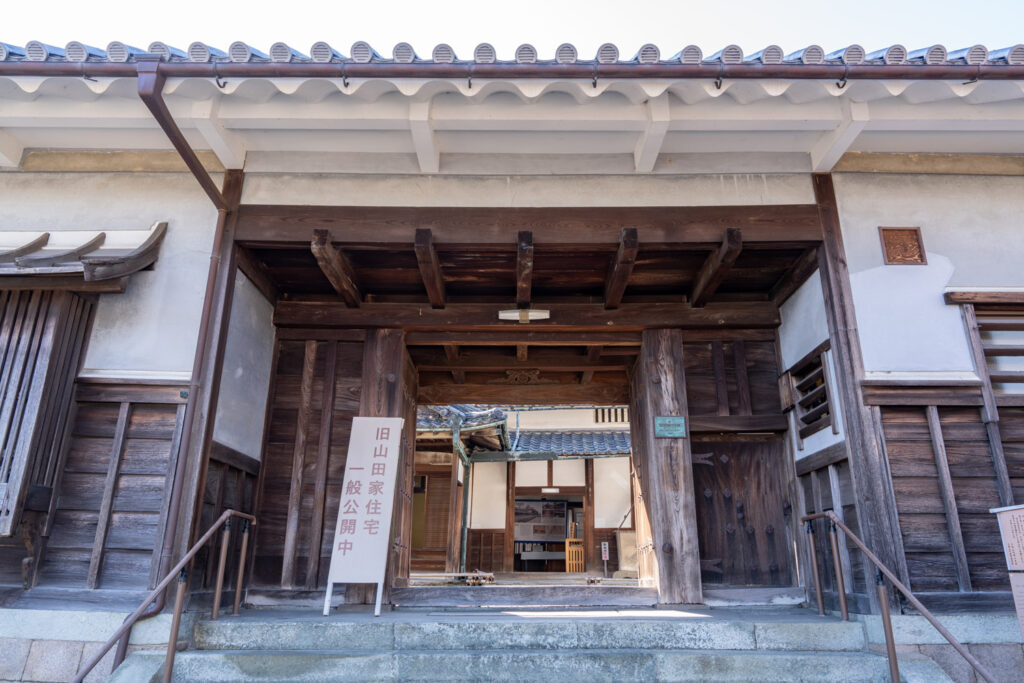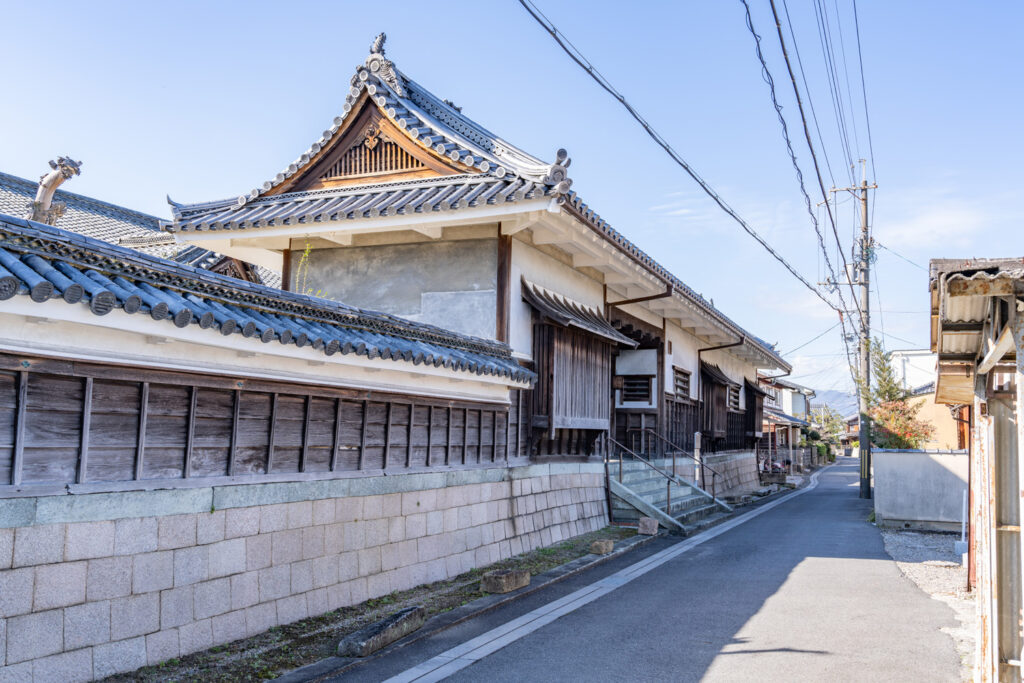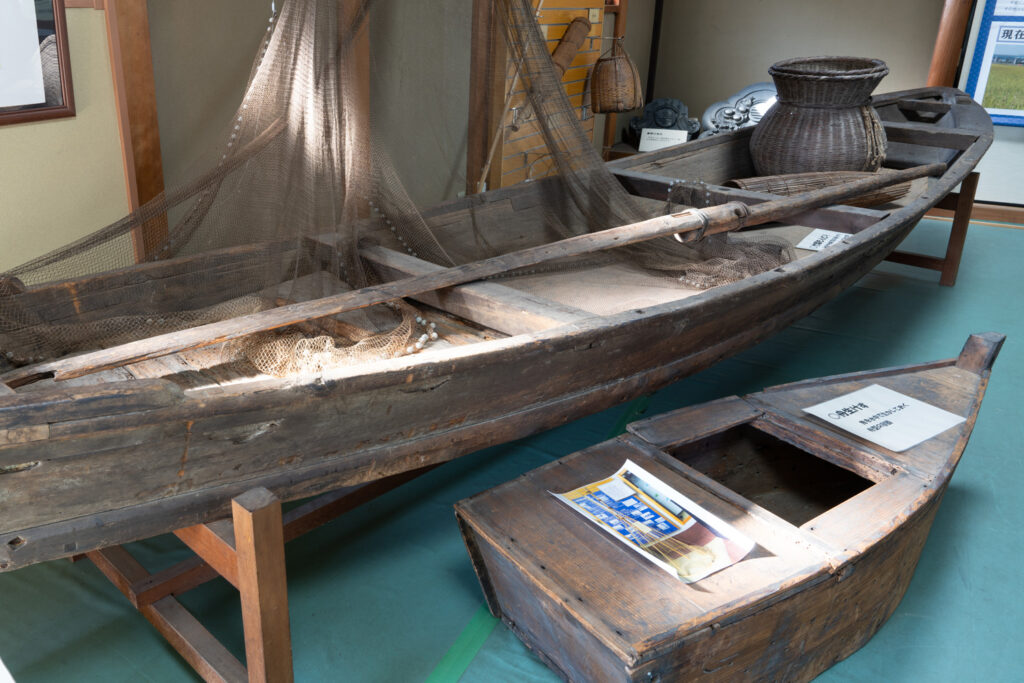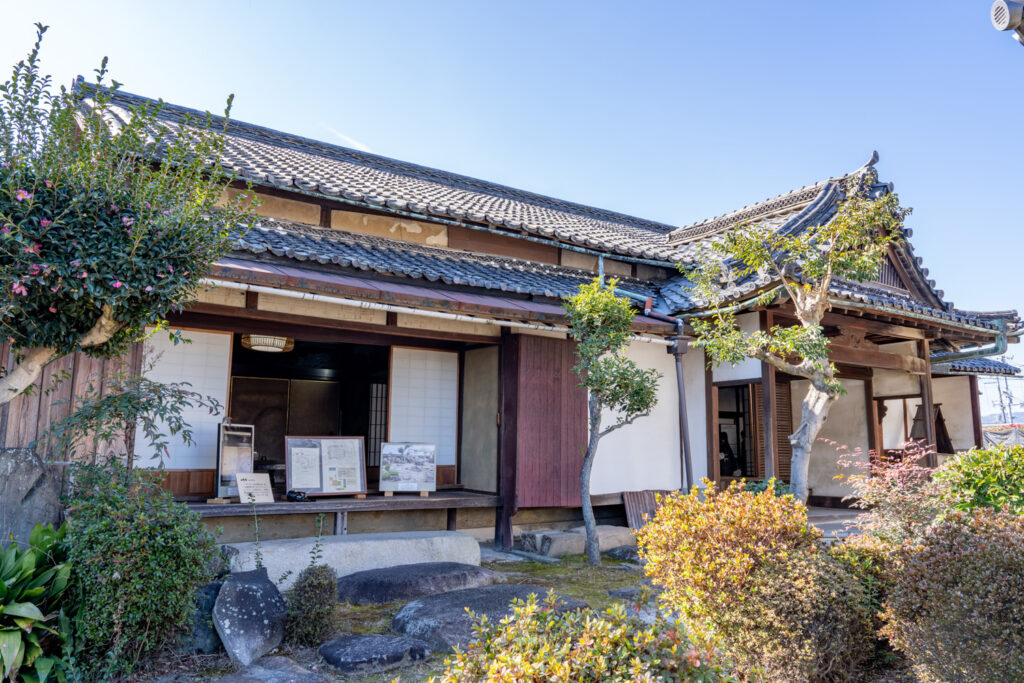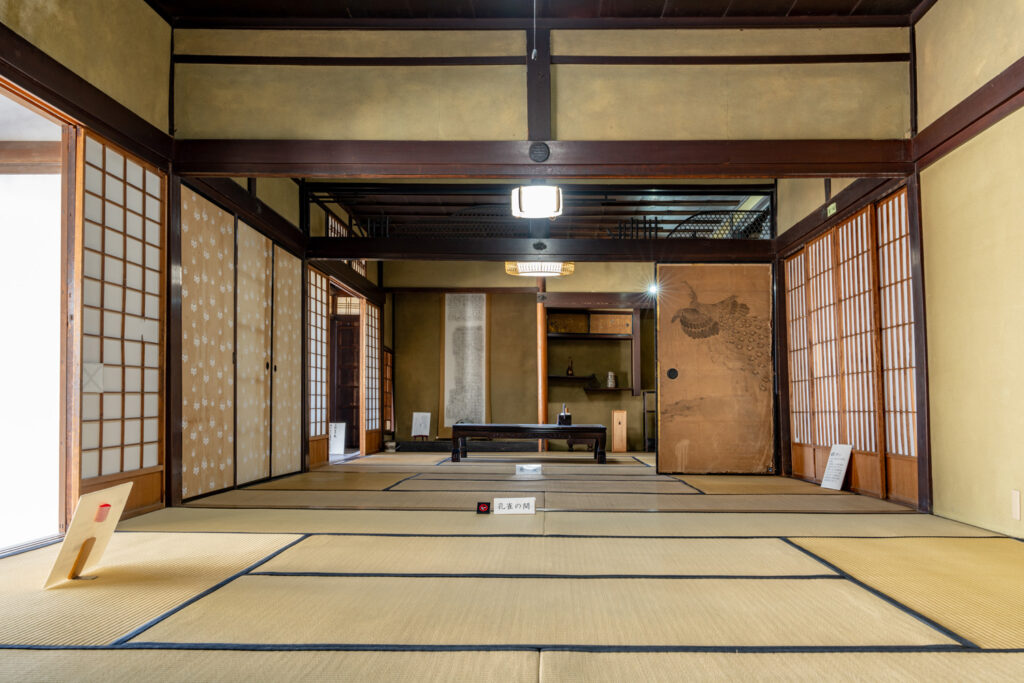In the Edo Period (from 1603 to around 1868), the Yamada family served as O-shoya (the head of a local community, who managed the people) of thirteen villages in the area called Mimaki-go. They managed the fishing operations around Ogura-ike Pond that once spread over a large area.
Their residence was strategically built on the stone foundation to protect it from flooding. The nagaya-mon (one of Japanese traditional gatehouse styles) at its entrance, with its imposing appearance reminiscent of a Buke-Yashiki (samurai house), offers a glimpse into the family's former status. The nagaya-mon, the long wall and the main house inside are nationally-registered Tangible Cultural Properties.
You can also see materials related to the Ogura-ike Pond inside. There is an exhibit of traditional fishing tools, including traps and a boat-shaped fish tank as well. The remaining carp-designed ranma (decorative panel seen in the upper part of a room) and a dragon painting on fusuma (Japanese sliding partition) still exude the family’s grandeur.
- Tel
- 0774-45-0002 (You Hall)
- Address
- 35 Higashi-imoarai, Kumiyama Town, Kuse-gun, Kyoto
- Access
- -From Chushojima Station (Keihan Main Line) or Okubo Station (Kintetsu Kyoto Line), take Kyoto Keihan Bus to Higashi Imoarai. Walk for about 10 minutes.
-From Matsuiyamate Station (JR Gakkentoshi Line), take Kyoto Keihan Bus to Machinoeki Aeonmall Kumiyama. Change buses to Higashi Imoarai. Walk for about 10 minutes. - Business Hours
- Saturdays, Sundays, national holidays
9:00am - 12:00pm - Parking
- Available (5 cars)
